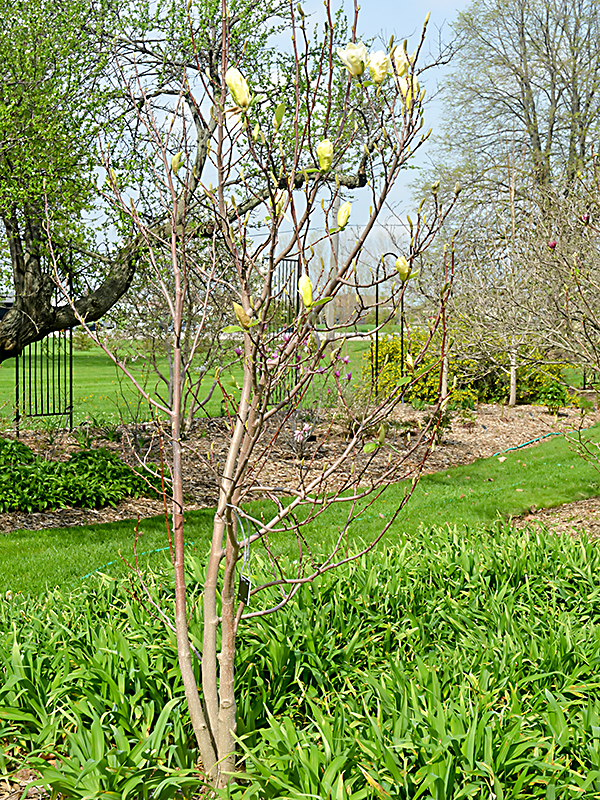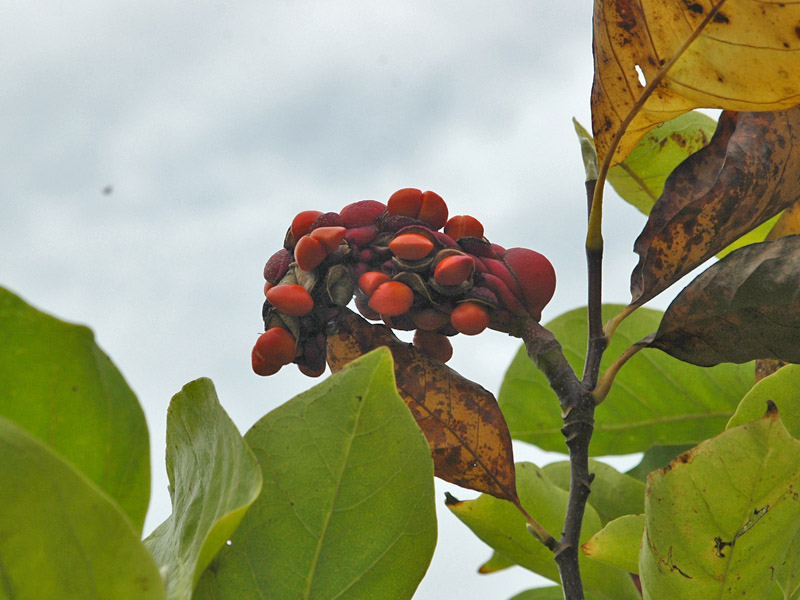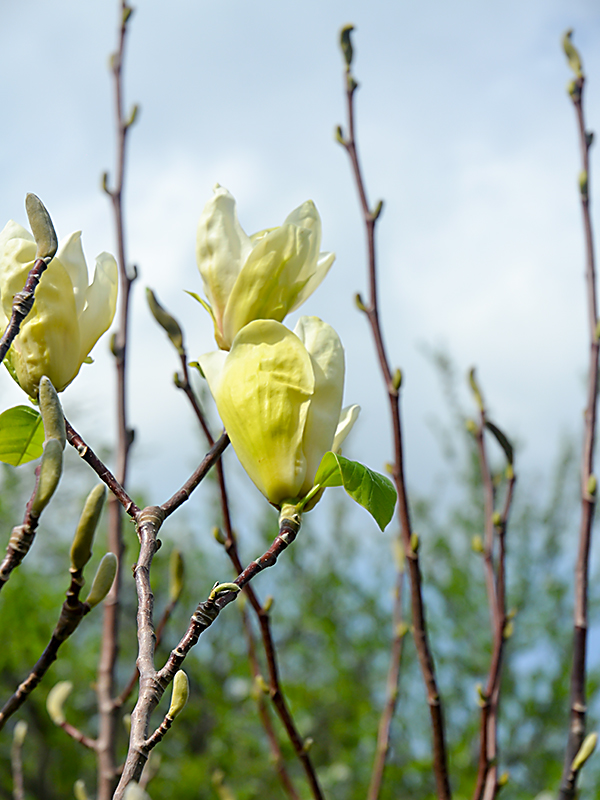| General Description | This specimen has an upright habit with a somewhat broad spreading canopy. Single trunked, with butter yellow, fragrant, tulip-shaped flowers, with a light pink tinge at the base of the blooms in early spring. |
| ID Characteristic | This particular cultivar can be distinguished by its large, creamy yellow, fragrant flowers. The flowers of Yellow Lantern are generally larger than that of other yellow–flowered Magnolia's such as Yellow Butterfly. |
| Shape | Upright in form producing a small tree. |
| Landscape | Perfect for sunny areas as an accent within a spring like setting. |
| Propagation | Grafting is used in commercial applications. |
| Cultivation | Magnolia trees are notorious for their fleshy root systems and minimal lateral root growth. They should always be transplanted balled and burlapped or otherwise container grown, never bare root. They need moist, deep and slightly acidic soil and are intolerant of extremely wet or dry environments. Flower directly after establishment, which takes approximately two years from planting if conditions are ideal; in most cases it will take at least five years for full flower bloom. Plant in full sun to partial shade, whilst being conscious of the prevailing winds; flower buds are easily damaged by strong winds and frost. |
| Pests | Scale and sooty mold are common problems for any Magnolia, but they are not a cause for major concern. |
| Notable Specimens | The A.M. Cuddy Gardens, Strathroy, Ontario, Canada. |
| Habitat | Horticultural origin. |
| Bark/Stem Description | Usually very smooth, sometimes found with minor sapsucker damage, darker grey on younger stems than older branches. |
| Leaf Description | Dark green, elliptic to oblong – ovate leaves, approximately 8-12 cm long, with entire margins. The autumn colour is a fairly unattractive yellow brown colour. |
| Flower Description | Flowers are large, approximately 7-10 cm, six petaled, butter yellow, upward facing and cup shaped. Individual blooms have a light pink tinge at the base and are quite fragrant. Terminal flower buds are pubescent and smooth to the touch and are approximately 2-3 cm long. |
| Fruit Description | Large clusters of aggregate, unorganized, inedible fruit, that can reach up to 10 cm in diameter. The fruit is produced in large quantities. As the fruit splits open glossy, orange 1 cm seeds are revealed. |
| Colour Description | The bark is a dark grey until maturity, when it lightens to a soft grey. The Fruit is a dull red until the seed emerges and drops which is a bright glossy orange colour. The flowers bloom in late April to mid-May are a creamy yellow while the foliage is dark green but changes to a dull, yellow brown in autumn. |
| Texture Description | Medium textured plant towards maturity. |




